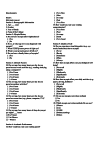A Cross-Sectional Study on the Prevalence, Risk Factors, and Impact of Myopia Among Medical Students in Andhra Pradesh, India
- PMID: 40861704
- PMCID: PMC12375404
- DOI: 10.7759/cureus.88760
A Cross-Sectional Study on the Prevalence, Risk Factors, and Impact of Myopia Among Medical Students in Andhra Pradesh, India
Abstract
Background: Myopia, or nearsightedness, is increasingly prevalent among students, largely due to prolonged screen time, near work (visually demanding activities performed at a short distance (typically less than 40 cm)), and reduced outdoor activity. Medical students, in particular, are at higher risk due to academic pressure and digital exposure, affecting their vision, performance, and well-being. Early detection and prevention are essential. This study investigates the prevalence, risk factors (genetics, near work, screen use, outdoor activity), and impact of myopia on daily life and academics to support awareness and better eye care practices.
Methodology: This cross-sectional study was conducted among undergraduate medical students in three tertiary care hospitals in Andhra Pradesh, India, over four months (August-December 2024). Using probability proportional to size sampling (PPSS), 1,506 students across different academic years were selected. Eligible participants were enrolled students who consented to participate, while those with hypermetropia or severe ocular conditions were excluded. Data were collected via a structured questionnaire covering demographics, myopia history, lifestyle habits, and academic performance, as well visual discomfort, psychological well-being, and myopia correction practices. Ethical approval was obtained, confidentiality was maintained, and pre-testing ensured data accuracy. Descriptive analysis determined myopia prevalence, and chi-squared tests were used to assess associations with genetics, screen time, sleep patterns, and academic performance.
Results: The overall prevalence of myopia among the medical students was 947 (61.55%), with significant associations between demographic and lifestyle factors. The highest prevalence was in the 20-22 age group (412, 62.24%) and the lowest in the 23-25 group (23, 48.94%), though the difference was not statistically significant (χ² = 5.23, p = 0.51). A total of 597 (65.19%) female students had a significantly higher prevalence than male students (322, 54.58%) (χ² = 17.38, p < 0.001). Myopia prevalence varied by academic year (χ² = 743.7, p < 0.001), peaking in third-year students (244, 70.11%) and lowest in fourth-year students (161, 46.55%). Family history was a strong predictor (χ² = 103.07, p < 0.001), with a higher prevalence among those with genetic predisposition (83.57%). Early onset (ages 5-10 years) was associated with greater severity (χ² = 248.03, p < 0.001), with 58 (51.33%) developing moderate and 25 (22.12%) high myopia. The associations with near work (χ² = 15.14, p = 0.08), screen time (χ² = 12.09, p = 0.2), and sleep patterns (χ² = 4.4, p = 0.88) were weak. Psychological distress was correlated with severity (χ² = 28.26, p < 0.05), and 50% of the high myopes reported severe limitations in daily activities.
Conclusion: This study highlights the high prevalence of myopia among medical students in Andhra Pradesh, linking it to lifestyle factors, such as prolonged near work, excessive screen time, and limited outdoor activity. Female students, particularly in their first year, were a higher risk. These findings emphasizes the importance of early detection through regular eye check-ups and lifestyle adjustments to slow myopia progression. Additionally, this study underscores the impact of myopia on academics, daily life, and mental well-being, reinforcing the need for targeted vision-care strategies and preventive measures in academic settings.
Keywords: academic performance; eye care; medical students; myopia; near work; outdoor activity; prevalence; risk factors; screen time; vision impairment.
Copyright © 2025, Manchikanty et al.
Conflict of interest statement
Human subjects: Informed consent for treatment and open access publication was obtained or waived by all participants in this study. Insitutional Ethics Committee, GVPIHCMT, Marikavalasa, Visakhapatnam issued approval RC. No: GVPIHCMT/IEC/20240725/12, IEC Reg. No.-EC/NEW/INST/2022/3026. Animal subjects: All authors have confirmed that this study did not involve animal subjects or tissue. Conflicts of interest: In compliance with the ICMJE uniform disclosure form, all authors declare the following: Payment/services info: All authors have declared that no financial support was received from any organization for the submitted work. Financial relationships: All authors have declared that they have no financial relationships at present or within the previous three years with any organizations that might have an interest in the submitted work. Other relationships: All authors have declared that there are no other relationships or activities that could appear to have influenced the submitted work.
References
-
- Study of myopia progression and risk factors in Hubei children aged 7-10 years using machine learning: a longitudinal cohort. Li W, Tu Y, Zhou L, et al. https://pubmed.ncbi.nlm.nih.gov/38429630/ BMC Ophthalmol. 2024;24:93. - PMC - PubMed
-
- Prevalence and association of uncorrected refractive error among Chinese adolescents: a cross-sectional study. Zhou Y, Chen X, Huang X, et al. https://link.springer.com/article/10.1186/s12889-024-20387-y. BMC Public Health. 2024;24:2904. - PMC - PubMed
-
- Factors affecting prevalence of myopia among undergraduate medical students: a cross-sectional study. Sandhu HK, Bansal Y, Chouhan V, et al. Indian J Clin Exp Ophthalmol. 2024;10:98–103.
LinkOut - more resources
Full Text Sources

